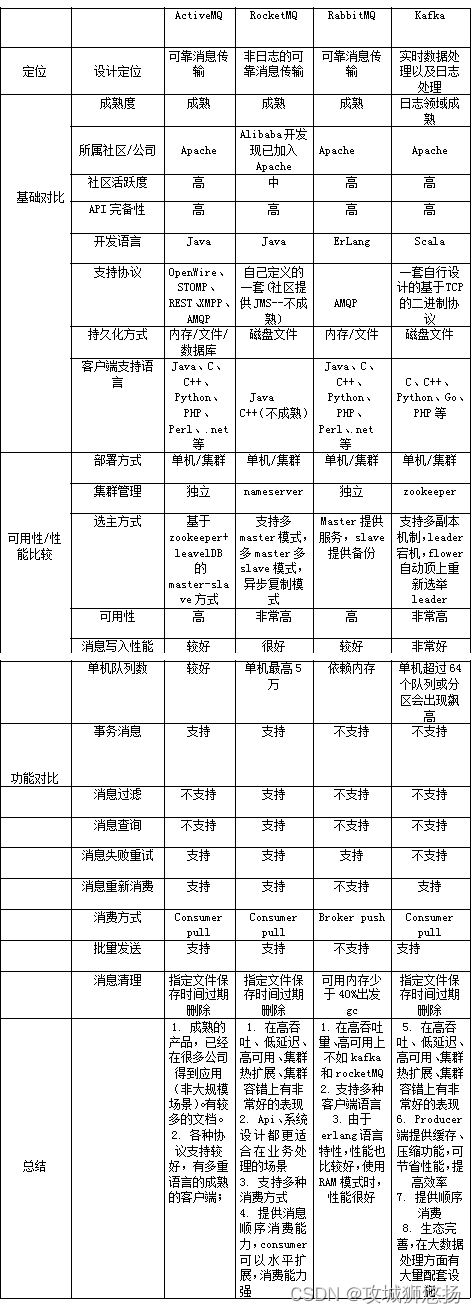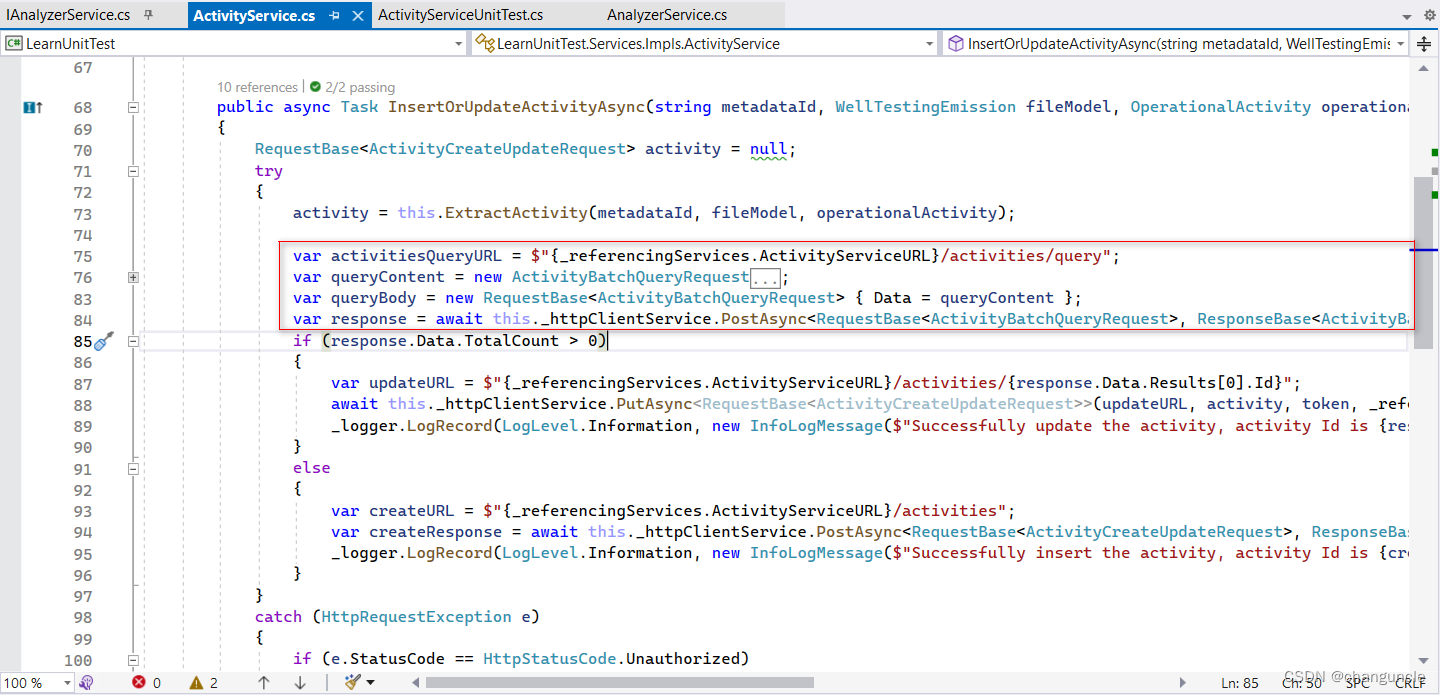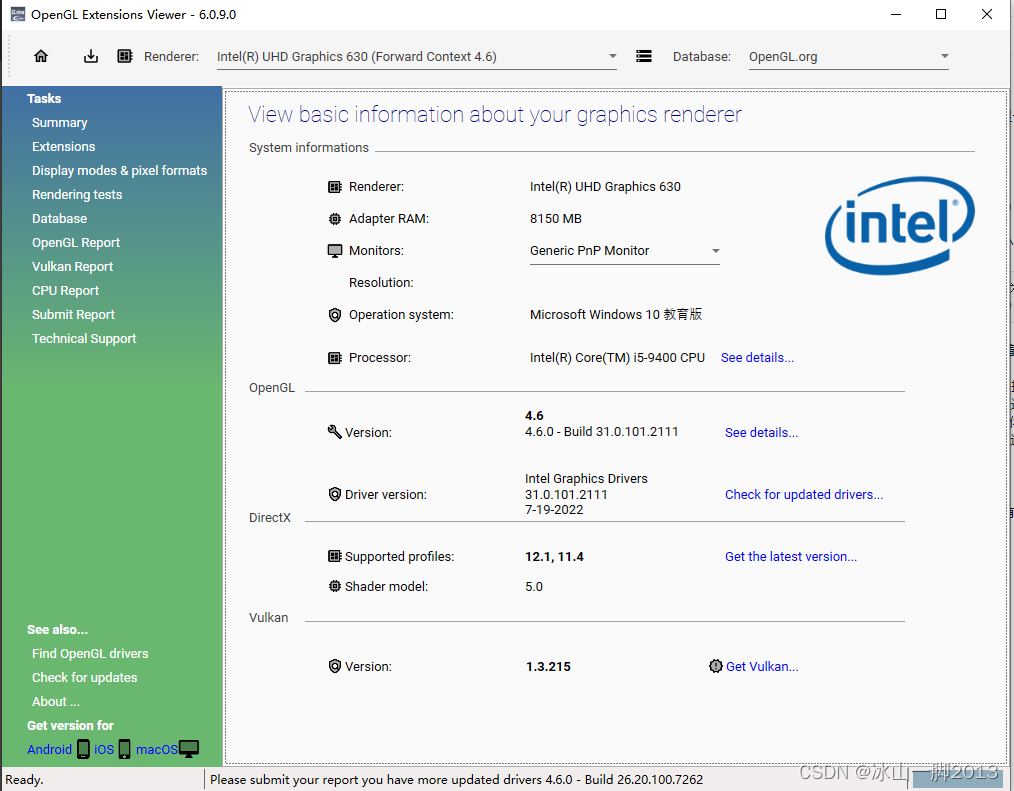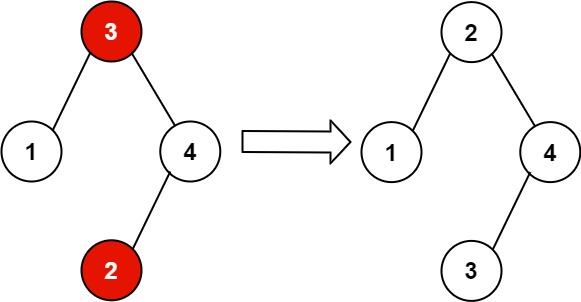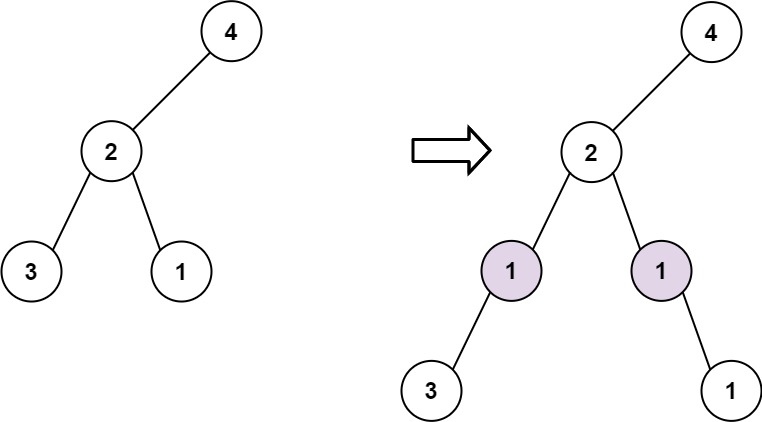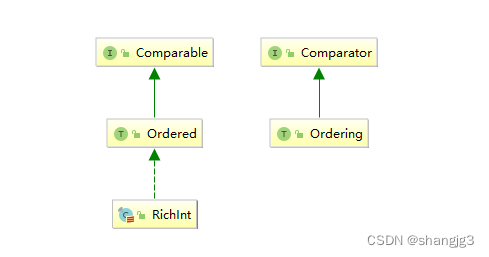TCM是一种被直接集成在CPU芯片中的高速缓存,TCM又分为ITCM(Instruction TCM)和DTCM(Data TCM)。ITCM是用来存储代码段的,DTCM是用来存储数据的。
为什么要使用DTCM来存储数据?1)频繁存取的数据,放到DTCM中以节省存取时间;2)存放到DTCM的数据,不会占用RAM的空间。
在S32 Design Studio for S32 Platform 3.4的IDE中,如何编写代码,能够成功使用这个空间,示例代码:
/*==================================================================================================
* Project : RTD AUTOSAR 4.4
* Platform : CORTEXM
* Peripheral : S32K3XX
* Dependencies : none
*
* Autosar Version : 4.4.0
* Autosar Revision : ASR_REL_4_4_REV_0000
* Autosar Conf.Variant :
* SW Version : 2.0.1
* Build Version : S32K3_RTD_2_0_1_D2207_ASR_REL_4_4_REV_0000_20220707
*
* (c) Copyright 2020 - 2021 NXP Semiconductors
* All Rights Reserved.
*
* NXP Confidential. This software is owned or controlled by NXP and may only be
* used strictly in accordance with the applicable license terms. By expressly
* accepting such terms or by downloading, installing, activating and/or otherwise
* using the software, you are agreeing that you have read, and that you agree to
* comply with and are bound by, such license terms. If you do not agree to be
* bound by the applicable license terms, then you may not retain, install,
* activate or otherwise use the software.
==================================================================================================*/
/**
* @file main.c
*
* @addtogroup main_module main module documentation
* @{
*/
/* Including necessary configuration files. */
#include "Mcal.h"
volatile int exit_code = 0;
/* User includes */
void TestDelay(uint32 delay);
void __attribute__ ((section(".itcm0_code"))) Test_function_in_ITCM(void);
void TestDelay(uint32 delay)
{
static volatile uint32 DelayTimer = 0;
while(DelayTimer<delay)
{
DelayTimer++;
}
DelayTimer=0;
}
void __attribute__ ((section(".itcm0_code"))) Test_function_in_ITCM(void)
{
TestDelay(4800000);
}
uint32_t __attribute__ ((section(".dtcm0_data"))) myDtcm0Data[1024] = {0, 1, 2, 3, 4, 5, 6, 7, 8, 9, 10};
uint32_t __attribute__ ((section(".dtcm0_data"))) myDtcm0Data1[1024] = {0, 1, 2, 3, 4, 5, 6, 7, 8, 9, 10};
/*!
\brief The main function for the project.
\details The startup initialization sequence is the following:
* - startup asm routine
* - main()
*/
int main(void)
{
/* Write your code here */
uint8 count = 0U;
for(count = 0; count < 10; count++)
{
// Test_function_in_ITCM();
// Test_function_in_ITCM();
myDtcm0Data[count] = myDtcm0Data1[count] + 10;
}
for(;;)
{
if(exit_code != 0)
{
break;
}
}
return exit_code;
}
/** @} */
当然,上面的只是一部分示例代码,如果不进行其他文件的配置,是不能成功使用的。需要编辑2个配置文件,分别是startup_cm7.s和linker_flash_s32k344.ld,这两个配置文件配置正确,就可以正常使用DTCM了。
linker_flash_s32k344.ld文件编辑注意事项如图红框所示:

linker_flash_s32k344.ld原始文件供参考:
/*==================================================================================================
* Project : RTD AUTOSAR 4.4
* Platform : CORTEXM
* Peripheral :
* Dependencies : none
*
* Autosar Version : 4.4.0
* Autosar Revision : ASR_REL_4_4_REV_0000
* Autosar Conf.Variant :
* SW Version : 2.0.1
* Build Version : S32K3_RTD_2_0_1_D2207_ASR_REL_4_4_REV_0000_20220707
*
* (c) Copyright 2020 - 2022 NXP Semiconductors
* All Rights Reserved.
*
* NXP Confidential. This software is owned or controlled by NXP and may only be
* used strictly in accordance with the applicable license terms. By expressly
* accepting such terms or by downloading, installing, activating and/or otherwise
* using the software, you are agreeing that you have read, and that you agree to
* comply with and are bound by, such license terms. If you do not agree to be
* bound by the applicable license terms, then you may not retain, install,
* activate or otherwise use the software.
==================================================================================================*/
/*
* GCC Linker Command File:
* 0x00400000 0x001F3FFF 2047999 Program Flash (last 64K sBAF)
* 0x10000000 0x1003FFFF 262144 Data Flash (last 32K HSE_NVM)
* 0x20400000 0x20408000 32768 Standby RAM_0 (32K)
* 0x20400000 0x20417FFF 98304 SRAM_0 (96KB)
* Last 48 KB of SRAM_1 reserved by HSE Firmware
* Last 176 KB of CODE_FLASH_3 reserved by HSE Firmware
* Last 128 KB of DATA_FLASH reserved by HSE Firmware (not supported in this linker file)
*/
HEAP_SIZE = DEFINED(__heap_size__) ? __heap_size__ : 0x00002000;
ENTRY(Reset_Handler)
MEMORY
{
int_flash : ORIGIN = 0x00400000, LENGTH = 0x001D4000 /* 2048K - 176K (sBAF + HSE)*/
int_itcm : ORIGIN = 0x00000000, LENGTH = 0x00008000 /* 32K */
int_dtcm : ORIGIN = 0x20000000, LENGTH = 0x00010000 /* 64K */
int_sram : ORIGIN = 0x20400000, LENGTH = 0x00006F00 /* 27 KB */
int_sram_fls_rsv : ORIGIN = 0x20406F00, LENGTH = 0x00000100
int_sram_stack_c0 : ORIGIN = 0x20407000, LENGTH = 0x00001000
int_sram_no_cacheable : ORIGIN = 0x20408000, LENGTH = 0x00007F00 /* 32kb , needs to include int_results */
int_sram_results : ORIGIN = 0x2040FF00, LENGTH = 0x00000100
int_sram_shareable : ORIGIN = 0x20410000, LENGTH = 0x00008000 /* 32KB */
ram_rsvd2 : ORIGIN = 0x20418000, LENGTH = 0 /* End of SRAM */
}
SECTIONS
{
.flash :
{
KEEP(*(.boot_header))
. = ALIGN(4096);
__text_start = .;
__interrupts_rom_start = .;
KEEP(*(.intc_vector))
. = ALIGN(4);
__interrupts_rom_end = .;
KEEP(*(.core_loop))
. = ALIGN(4);
*(.startup)
. = ALIGN(4);
*(.systeminit)
. = ALIGN(4);
*(.text.startup)
. = ALIGN(4);
*(.text)
*(.text*)
. = ALIGN(4);
*(.mcal_text)
. = ALIGN(4);
*(.acmcu_code_rom)
. = ALIGN(4);
__acfls_code_rom_start = .;
*(.acfls_code_rom)
. = ALIGN(4);
__acfls_code_rom_end = .;
KEEP(*(.init))
. = ALIGN(4);
KEEP(*(.fini))
. = ALIGN(4);
*(.rodata)
*(.rodata*)
. = ALIGN(4);
*(.mcal_const_cfg)
. = ALIGN(4);
*(.mcal_const)
. = ALIGN(4);
__init_table = .;
KEEP(*(.init_table))
. = ALIGN(4);
__zero_table = .;
KEEP(*(.zero_table))
} > int_flash
. = ALIGN(4);
__text_end = .;
__sram_data_rom = __text_end;
.sram_data : AT(__sram_data_rom)
{
. = ALIGN(4);
__sram_data_begin__ = .;
. = ALIGN(4);
*(.ramcode)
. = ALIGN(4);
*(.data)
*(.data*)
. = ALIGN(4);
*(.mcal_data)
. = ALIGN(4);
__sram_data_end__ = .;
} > int_sram
__sram_data_rom_end = __sram_data_rom + (__sram_data_end__ - __sram_data_begin__);
.sram_bss (NOLOAD) :
{
. = ALIGN(16);
__sram_bss_start = .;
*(.bss)
*(.bss*)
. = ALIGN(16);
*(.mcal_bss)
. = ALIGN(4);
__sram_bss_end = .;
} > int_sram
/* heap section */
.heap (NOLOAD):
{
. += ALIGN(4);
_end = .;
end = .;
_heap_start = .;
. += HEAP_SIZE;
_heap_end = .;
} > int_sram
.acfls_code_ram :
{
acfls_code_ram_start = .;
*(.acfls_code_ram)
acfls_code_ram_stop = .;
} > int_sram_fls_rsv
__non_cacheable_data_rom = __sram_data_rom_end;
.non_cacheable_data : AT(__non_cacheable_data_rom)
{
. = ALIGN(4);
__non_cacheable_data_start__ = .;
. = ALIGN(4096);
__interrupts_ram_start = .;
. += __interrupts_rom_end - __interrupts_rom_start;
. = ALIGN(4);
__interrupts_ram_end = .;
*(.mcal_data_no_cacheable)
. = ALIGN(4);
*(.mcal_const_no_cacheable)
. = ALIGN(4);
HSE_LOOP_ADDR = .;
LONG(0x0);
__non_cacheable_data_end__ = .;
} > int_sram_no_cacheable
int_results (NOLOAD):
{
. = ALIGN(4);
KEEP(*(.int_results))
. += 0x100;
} > int_sram_results
__non_cacheable_data_rom_end = __non_cacheable_data_rom + (__non_cacheable_data_end__ - __non_cacheable_data_start__);
.non_cacheable_bss (NOLOAD) :
{
. = ALIGN(16);
__non_cacheable_bss_start = .;
*(.mcal_bss_no_cacheable)
. = ALIGN(4);
__non_cacheable_bss_end = .;
} > int_sram_no_cacheable
__shareable_data_rom = __non_cacheable_data_rom_end;
.shareable_data : AT(__shareable_data_rom)
{
. = ALIGN(4);
__shareable_data_start__ = .;
KEEP(*(.mcal_shared_data))
. = ALIGN(4);
__shareable_data_end__ = .;
} > int_sram_shareable
__shareable_data_rom_end = __shareable_data_rom + (__shareable_data_end__ - __shareable_data_start__);
.shareable_bss (NOLOAD) :
{
. = ALIGN(16);
__shareable_bss_start = .;
*(.mcal_shared_bss)
. = ALIGN(4);
__shareable_bss_end = .;
} > int_sram_shareable
__itcm0_code_rom = __shareable_data_rom_end;
.itcm0_code : AT(__itcm0_code_rom)
{
. = ALIGN(4);
__itcm0_code_start__ = .;
KEEP(*(.itcm0_code))
. = ALIGN(4);
__itcm0_code_end__ = .;
} > int_itcm
__itcm0_code_rom_end = __itcm0_code_rom + (__itcm0_code_end__ - __itcm0_code_start__);
__dtcm0_data_rom = __itcm0_code_rom_end;
.dtcm0_data : AT(__dtcm0_data_rom)
{
. = ALIGN(4);
__dtcm0_data_start__ = .;
KEEP(*(.dtcm0_data))
. = ALIGN(4);
__dtcm0_data_end__ = .;
} > int_dtcm
__dtcm0_data_rom_end = __dtcm0_data_rom + (__dtcm0_data_end__ - __dtcm0_data_start__);
__Stack_end_c0 = ORIGIN(int_sram_stack_c0);
__Stack_start_c0 = ORIGIN(int_sram_stack_c0) + LENGTH(int_sram_stack_c0);
__Stack_end_c1 = 0;
__Stack_start_c1 = 0;
__INT_SRAM_START = ORIGIN(int_sram);
__INT_SRAM_END = ORIGIN(ram_rsvd2);
__INT_ITCM_START = ORIGIN(int_itcm);
__INT_ITCM_END = ORIGIN(int_itcm) + LENGTH(int_itcm);
__INT_DTCM_START = ORIGIN(int_dtcm);
__INT_DTCM_END = ORIGIN(int_dtcm) + LENGTH(int_dtcm);
__RAM_SHAREABLE_START = ORIGIN(int_sram_shareable);
__RAM_SHAREABLE_END = ORIGIN(ram_rsvd2)-1;
__RAM_SHAREABLE_SIZE = 0xF;
__ROM_SHAREABLE_START = __shareable_data_rom;
__ROM_SHAREABLE_END = __shareable_data_rom_end;
__RAM_NO_CACHEABLE_START = ORIGIN(int_sram_no_cacheable);
__RAM_NO_CACHEABLE_END = ORIGIN(int_sram_shareable)-1;
__RAM_NO_CACHEABLE_SIZE = 0xF; /* 32kbyte in power of 2 */
__ROM_NO_CACHEABLE_START = __non_cacheable_data_rom;
__ROM_NO_CACHEABLE_END = __non_cacheable_data_rom_end;
__RAM_CACHEABLE_START = ORIGIN(int_sram);
__RAM_CACHEABLE_END = ORIGIN(int_sram_no_cacheable)-1;
__RAM_CACHEABLE_SIZE = 0xF; /* 32kbyte in power of 2 */
__ROM_CACHEABLE_START = __sram_data_rom;
__ROM_CACHEABLE_END = __sram_data_rom_end;
__ROM_CODE_START = ORIGIN(int_flash);
__ROM_DATA_START = 0x10000000;
__RAM_ITCM0_CODE_START = __itcm0_code_start__;
__ROM_ITCM0_CODE_START = __itcm0_code_rom;
__ROM_ITCM0_CODE_END = __itcm0_code_rom_end;
__RAM_DTCM0_DATA_START = __dtcm0_data_start__;
__ROM_DTCM0_DATA_START = __dtcm0_data_rom;
__ROM_DTCM0_DATA_END = __dtcm0_data_rom_end;
__BSS_SRAM_START = __sram_bss_start;
__BSS_SRAM_END = __sram_bss_end;
__BSS_SRAM_SIZE = __sram_bss_end - __sram_bss_start;
__BSS_SRAM_NC_START = __non_cacheable_bss_start;
__BSS_SRAM_NC_SIZE = __non_cacheable_bss_end - __non_cacheable_bss_start;
__BSS_SRAM_NC_END = __non_cacheable_bss_end;
__BSS_SRAM_SH_START = __shareable_bss_start;
__BSS_SRAM_SH_SIZE = __shareable_bss_end - __shareable_bss_start;
__BSS_SRAM_SH_END = __shareable_bss_end;
__RAM_INTERRUPT_START = __interrupts_ram_start;
__ROM_INTERRUPT_START = __interrupts_rom_start;
__ROM_INTERRUPT_END = __interrupts_rom_end;
__INIT_TABLE = __init_table;
__ZERO_TABLE = __zero_table;
__RAM_INIT = 1;
__ITCM_INIT = 1;
__DTCM_INIT = 1;
Fls_ACEraseRomStart = __acfls_code_rom_start;
Fls_ACEraseRomEnd = __acfls_code_rom_end;
Fls_ACEraseSize = (__acfls_code_rom_end - __acfls_code_rom_start) / 4; /* Copy 4 bytes at a time*/
Fls_ACWriteRomStart = __acfls_code_rom_start;
Fls_ACWriteRomEnd = __acfls_code_rom_end;
Fls_ACWriteSize = (__acfls_code_rom_end - __acfls_code_rom_start) / 4; /* Copy 4 bytes at a time*/
_ERASE_FUNC_ADDRESS_ = ADDR(.acfls_code_ram);
_WRITE_FUNC_ADDRESS_ = ADDR(.acfls_code_ram);
__ENTRY_VTABLE = __ROM_INTERRUPT_START;
__CORE0_VTOR = __interrupts_rom_start;
__CORE1_VTOR = __interrupts_rom_start;
}
startup_cm7.s文件修改注意事项如图红框所示:
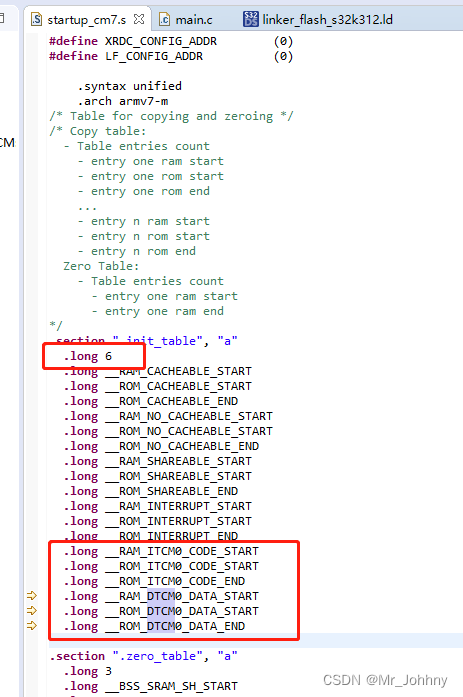
最后,通过debug单步调试,可以看到myDtcm0Data数组中已经有初始化值了,从0到10。而且myDtcm0Data的地址是0x20001000,在ld文件对应的地址范围内。

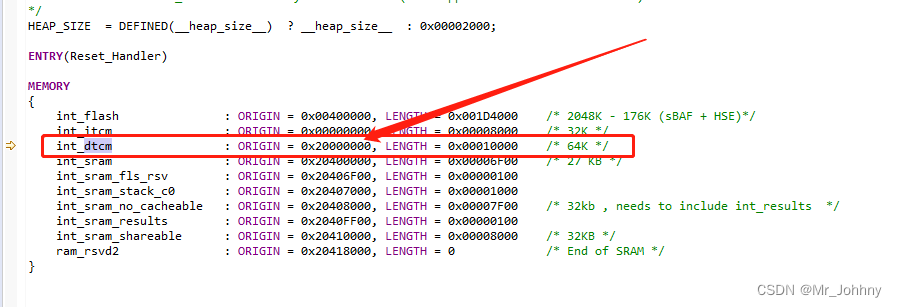
myDtcm0Data1的数据也有初始化值了,从0到10。myDtcm0Data1的地址是0x20000000,在ld文件对应的地址范围内。

到此,就可以成功使用DTCM了。





